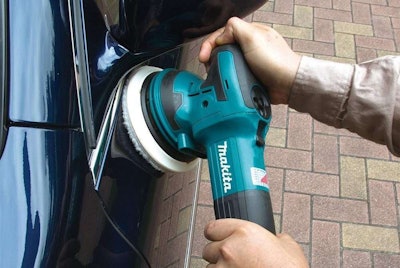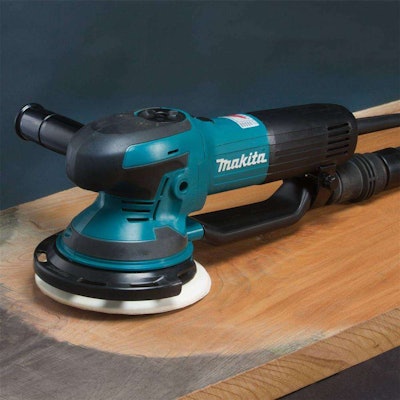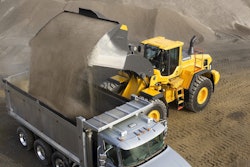 The random orbit mode and variable speed produce a fine finish suitable for polishing auto body or woodworking finishes.
The random orbit mode and variable speed produce a fine finish suitable for polishing auto body or woodworking finishes.None of the palm-grip random orbit sanders I’ve owned ever truly wowed me. Most professional shops use a DA sander (dual action) running off compressed air for aggressive material removal or metalwork and auto body finishing. Trouble is, you need Godzilla’s own air compressor to feed these hungry beasts and they usually don’t come with dust extraction.
 In the more aggressive random orbit with forced rotation mode you can remove material quickly.
In the more aggressive random orbit with forced rotation mode you can remove material quickly.Makita’s new BO6050J random orbit sander runs on standard 110-volt electricity rather than air. It has a switch that changes the orbit pattern to do either aggressive material removal or fine finishes.
If you’re trying to grind off something like weathered wood or boat barnacles, use the random orbit mode with what Makita calls “forced rotation.” Conversely, if you want a fine finish simply switch to the random orbit only mode and use a fine grit or a buffing pad to create swirl free finishes on wood or metal.
The Makita BO6050J sander’s variable speeds run from 1,600 to 6,800 orbits per minute to help control the rate of material removal. The 6-inch pad is a good size for production work, and changing from a hook and loop pad to a buffing attachment does not require any tools.
A barrel grip and side handle make this a comfortable and easy to control sander, especially when you are using it for long periods of time in vertical applications. The dust port hooks up to a shop vacuum to keep your work area and the air you breathe clean. Price is around $380.









